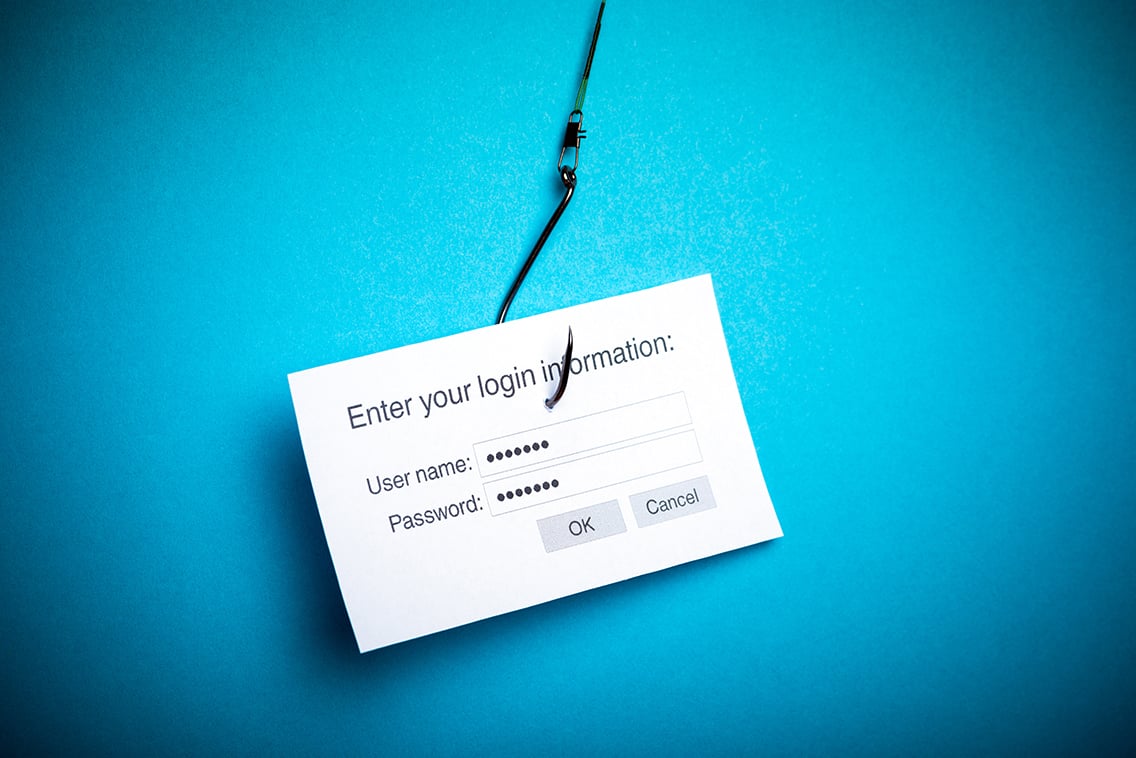How to Spot a Phishing Email in 2023
With phishing email attacks more prevalent than ever before, it’s imperative that you brush up on your detection skills. In February 2021, the FTC...

Here are the key takeaways from this blog:
Try our free resource to get clear, actionable guidelines, designed with the latest and best practices to ensure your institution remains secure and compliant
Most businesses these days are aware that loopholes and susceptibilities can allow a cybercriminal to wreak havoc on their website resulting in a loss of money, reputation, and more. Believe it or not, nearly all businesses have at least one susceptibility that can be exploited.
When it comes to cybersecurity, you shouldn’t ignore any weaknesses - no matter how insignificant they may seem. The earlier you can discover and patch a vulnerability, the better. With that in mind, in this post we’ll explore how to pen test your website so you can prevent issues before they even become a problem in the first place.
Pen testing, also called penetration testing, is a simulated cyberattack against a computer system or web application to look for susceptibilities that can be exploited. A penetration test may include an attempted “break in” of various application systems, such as frontend/backend servers or application protocol interfaces (APIs) to identify loopholes. The goal in identifying these weaknesses is to find ways to prevent threats and keep people from getting in.
High-profile security breaches seem to make the news regularly. As hackers and cybercriminals become more sophisticated, the chances of your online property falling into the hands of cyber attackers grows. Because of this, it’s more important now than ever before to learn and utilize advanced security strategies. While you may never be 100% safe, you can certainly put in the work to do all you can to prevent a cyber threat.
The primary reason why organizations need pen tests is to assess the present status of their existing security measures. With a pen test, it will be pretty easy to recognize how susceptible an organization is, and the many ways in which it can be exploited.
With frequent pen testing, your business's continuity is more easily managed. Performing penetration tests twice a year, or once a year at a minimum, will make it that much easier for your business to encounter a conveniently recoverable network downtime.
Pen testing helps in enhancing your company’s existing security infrastructure. When you start penetration tests, you’ll better understand the security gaps and the prospective impact of cyberattacks on the present security approaches.
Your brand will certainly suffer a blow to its reputation in the event a data breach happens and it’s publicized. This can lead to a loss of customer confidence or even a decline in profit and revenue. If your company is public, your organization’s share price could be negatively impacted as investors may be extra cautious as well.
If your company wants to adhere to specific industry regulations and standards, performing pen testing regularly is the first step towards ensuring compliance.
Network susceptibilities are categorized into software, hardware and human. Now, let’s examine the various testing types and how to start pen testing in your own business.
Usually, this type of testing identifies places in an app that are prone to exploitation by a cyber attacker. Installing new third-party applications that enable viewing sensitive info on a business website could offer a loophole into a company’s system. A web application penetration testing is aimed at:
Ideally, this type of testing aims to identify places that hackers may exploit in several networks, network devices, hosts or even systems. The test searches for ways a cyber attacker may identify real-world openings to compromise an organization to access unauthorized sensitive info. It mainly searches for:
Physical pen testing mainly assesses the strength of an organization’s existing security measures. This type of pen test searches for any loopholes susceptible to identification and manipulation by hackers. It’s common for hackers to compromise physical barriers, such as cameras and sensors, to access sensitive business sections.
Just like it sounds, these types of tests search for weaknesses in apps, systems, hosts, devices and software used in cryptocurrency transactions and storage protocols.
Cloud Security Pen Testing is vital in assisting companies in cloud technology to secure their susceptible assets. The autonomy and flexibility that comes with inventive solutions, like PaaS (Platform as a Service) and IaaS (Infrastructure as a Service), exposes companies to new security risks.
With this testing, your company typically focuses on any software or hardware flaws that could enable hackers to access a company’s sensitive data or even take over its systems. The test mainly evaluates the following weaknesses:
In the information gathering stage, it’s a good idea to make sure that the pen testers, upper management, and stakeholders are all on the same page with the anticipated outcome of testing. IT security personnel performs surveillance on the target, gathers the required info and executes the tests while keeping everyone informed of what’s transpiring. As a result, this stage should entail things like:
In this stage, the security team plots the threats that may harm or attack an organization. The team typically utilizes the insights gained during the information gathering stage to set up the activities to perform during the various pen tests. Additionally, this stage involves designing risk rankings for various weaknesses.
Depending on the information acquired in the previous stages, upper management along with the security team determines the assets to eradicate. Here, they’ll confirm the devices, systems, networks and other components that pose the highest risk via researching, testing and validation.
In this stage, the IT security personnel will attempt to identify susceptibilities and exploit them.
Finally, an assessment will be made as to the degree of damage a cyber attacker can prospectively cause by taking advantage of a loophole present in a component. Basically, they’ll evaluate the value of any compromised sensitive info plus how a hacker could gain control of a company’s system.
As mentioned previously, penetration testing should be performed at a minimum of once annually. Twice a year or even quarterly is even better. By doing regular testing, companies can work on:
Try our free resource to get clear, actionable guidelines, designed with the latest and best practices to ensure your institution remains secure and compliant

With phishing email attacks more prevalent than ever before, it’s imperative that you brush up on your detection skills. In February 2021, the FTC...

Here are the key takeaways from this blog: FDIC's InTREx procedures were updated to streamline IT examinations, including a condensed Information...

Here are the key takeaways from this blog: Start with a self-assessment: Understand what data you're storing, audit systems and devices, and...